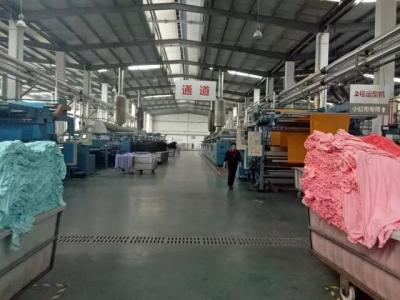Unraveling the Intricacies of Fabric Dynamics
In the world of textiles, the dynamic behavior of fabrics is a crucial consideration. Whether in apparel, upholstery, or industrial applications, the way a fabric moves and behaves can significantly impact its performance and aesthetics. One persistent challenge in this realm is the occurrence of fabric jackknifing—a phenomenon where folds and creases disrupt the smooth drape of the material. Enter anti-slip agents, the unsung heroes transforming fabric dynamics and weaving stability into the very fabric of our lives.
The Jackknifing Conundrum: A Fabric's Unruly Dance
Fabric jackknifing, often likened to the unpredictable folding of an accordion, occurs when sections of the fabric buckle and fold upon themselves. This phenomenon is not only aesthetically displeasing but can also compromise the functionality of the textile, especially in applications where smooth, controlled movement is essential. Understanding the dynamics of fabric movement is the first step in addressing this challenge.
The Anti-Slip Solution: A Grip on Fabric Stability
Anti-slip agents, also known as friction modifiers or anti-blocking agents, emerge as a revolutionary solution to the fabric jackknifing conundrum. These agents work by altering the surface properties of the fabric, reducing friction between fibers and preventing unwanted adhesion. The result is a fabric that glides smoothly over itself, resisting the tendency to fold or bunch up. The transformation is not just visual; it is a fundamental shift in the way fabric interacts with itself.
The Science Behind Stability: How Anti-Slip Agents Work
At the heart of weaving stability is the intricate science behind anti-slip agents. These compounds create a micro-thin layer on the fabric surface, reducing inter-fiber friction without compromising the material's overall properties. This thin layer acts as a lubricant, allowing the fibers to move with greater freedom and minimizing the risk of jackknifing. The delicate balance between slip and grip is the key to achieving stability without sacrificing other essential fabric characteristics.
From Apparel to Industry: Versatility in Application
The impact of anti-slip agents extends beyond the world of fashion. While they play a crucial role in enhancing the drapability of clothing, these agents find applications in various industries where fabric movement is a critical factor. From conveyor belts to medical textiles, the versatility of anti-slip agents makes them indispensable in creating stable and functional fabrics across a spectrum of uses.
Weaving stability into the very fabric of our garments and industrial textiles is an art, and anti-slip agents are the master strokes that make it possible. As we delve deeper into the dynamics of fabric behavior, the role of these agents becomes increasingly apparent. From preventing unsightly folds in our clothes to ensuring the efficiency of industrial processes, anti-slip agents are the invisible hands weaving stability into the fabric of our daily lives.



 English
English  日本語
日本語  Español
Español  tiếng việt
tiếng việt  Türkçe
Türkçe  ไทย
ไทย  українська
українська  हिंदी
हिंदी  বাঙালি
বাঙালি  اردو
اردو 


